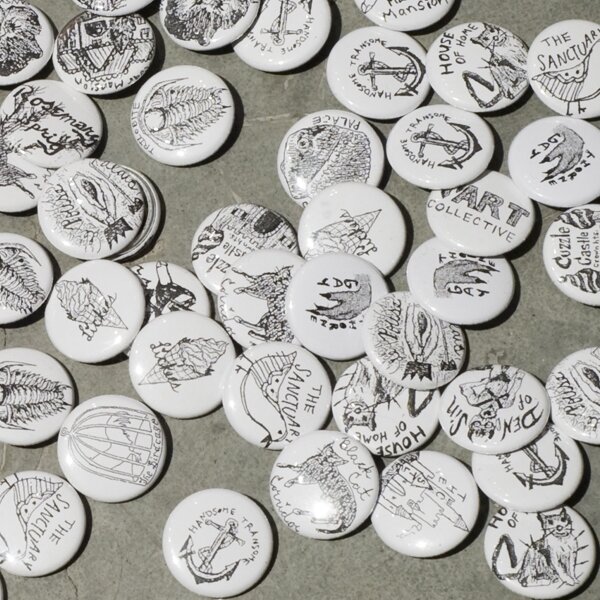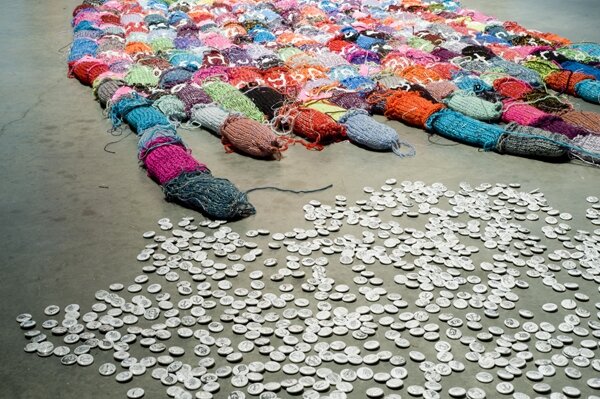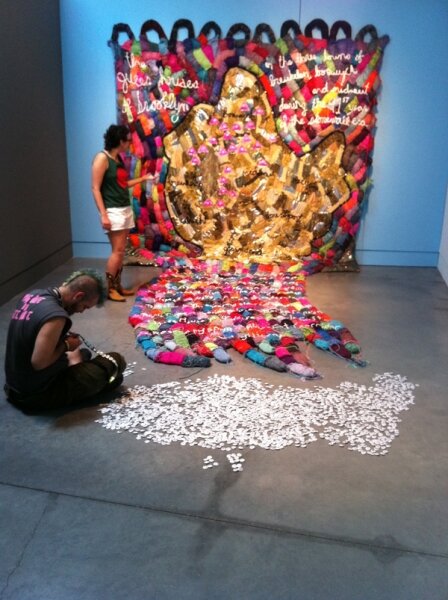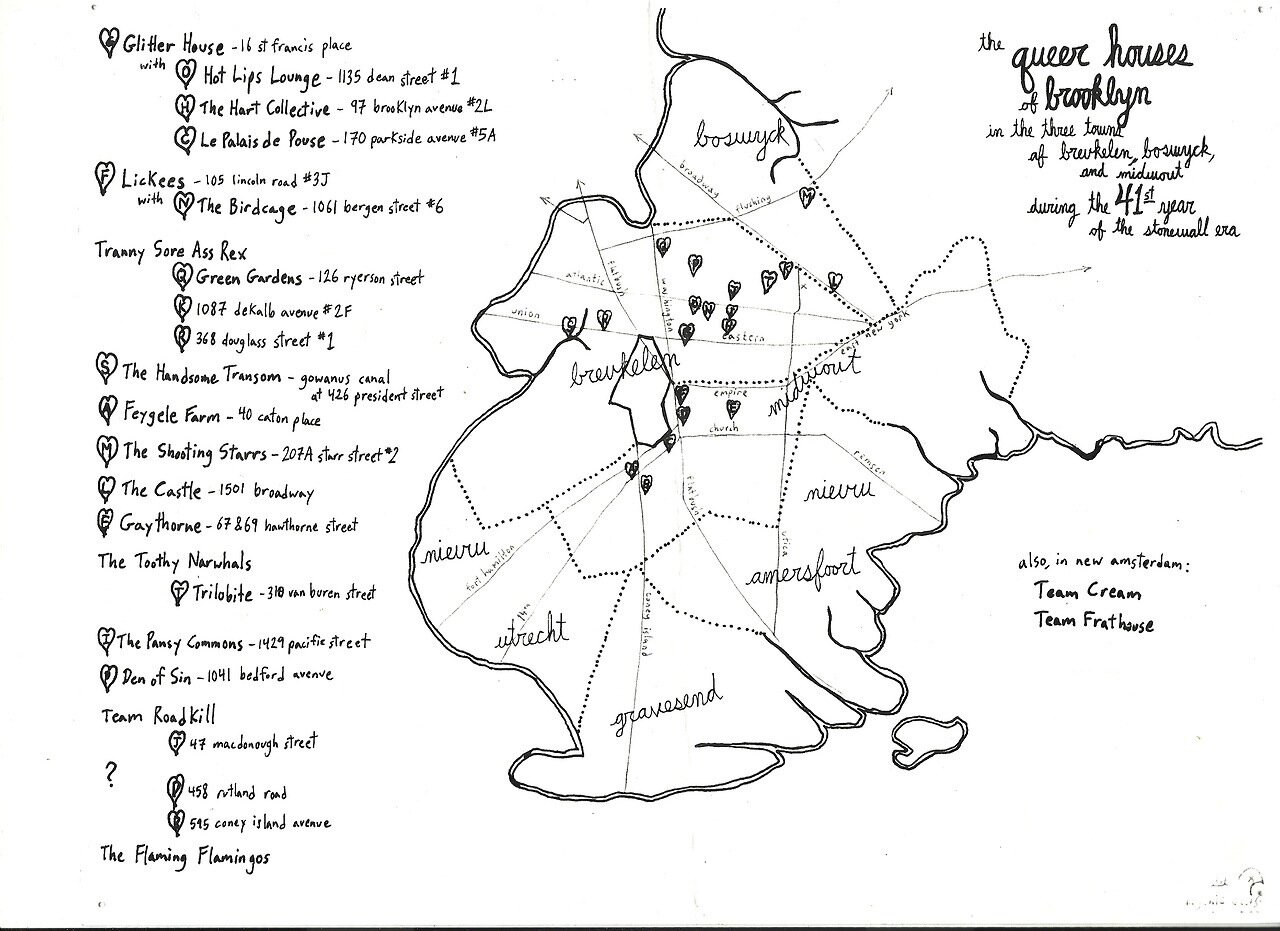Buttons for LJ Roberts’ Sculptural Installation, The Queer Houses of Brooklyn and the Three Towns of Boswyck, Breukelen and Midwout in the 41st Year of the Stonewall Era), 2011
In 2011, LJ Roberts commissioned me to illustrate buttons for each of the Queer Houses plotted onto their knitted map The Queer Houses of Brooklyn.
I chose between depicting the house names literally, and interpreting them into a candyland-esque architectural rendering. Many of the houses were places I spent time, and one of them, Cuzzle Castle, was where I lived with my cousin Lexie Newman. The buttons are installed in LJ’s installations as takeaways, inspired by those of Felix Gonzalez-Torres. The piece has been shown at The Brooklyn Museum, The Leslie Lohman Museum of Art, Mills Gallery at Boston Center for the Arts, Maryland Institute College of Art (MICA), Grizzly Grizzy in Philadelphia, and is in the permanent collection of the Renwick Gallery at the Smithsonian Institute in Washington, DC.
LJ’s map is based on the drawing by Rozsa Lang-Levitsky, which looks at the history of Dutch colonies within so-called Brooklyn, and plots the 2010/2011 living situations of Brooklyn queers’ chosen families on top of that history. LJ does this fabulously, often with glitter yarn, and for much of this process, they used a sparkly pink Barbie knitting machine.
One contextual piece of this particular recent history is that a defunct organization called Quorum Forum had been putting together free events for queer people outside of bars and ticketed spaces. Quorum Forum organized two very widely attended Queer House Field Days in Prospect Park in August 2010 and 2011. These Field Days prompted the various houses to group into teams to compete in relay races such as “dildo ring toss” and “suck and blow” (like in Clueless). Many of these houses have since disbanded, and others have stuck mostly together and relocated to new apartments after being displaced from rising rents.
LJ’s (and Rozsa’s) map refer to this moment in Brooklyn’s queer community at a more potent time in the history of that generation’s gentrification, when queers could still mostly afford to live in closer proximity to one another (albeit not as closely as say, the east village in the 90s).
For more images of the piece, please follow this link to LJ’s website.




